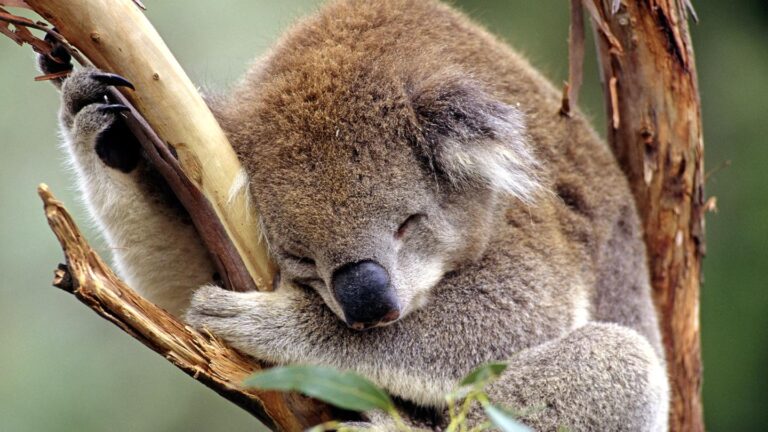Australia has taken a significant step in the fight against a devastating health crisis affecting its iconic wildlife, as authorities approve a groundbreaking vaccine aimed at curbing the spread of chlamydia among koalas. This deadly bacterial infection has been ravaging koala populations across the continent for decades, causing severe illness and death. The newly approved vaccine represents a milestone in conservation efforts, offering hope for the survival of this beloved marsupial species. Experts hail the development as a crucial tool in combating one of the most pressing threats to Australia’s national symbol.
Koala Chlamydia Vaccine Approved to Combat Deadly Outbreak
Australian wildlife authorities have greenlit the distribution of a groundbreaking vaccine designed to tackle chlamydia, a bacterial infection that has devastated a significant portion of the koala population. This disease not only causes blindness and infertility in affected animals, but also severely weakens their immune systems, making survival in the wild increasingly difficult. The new vaccine represents a critical turning point in conservation efforts, aiming to reduce infection rates and improve overall health among these iconic marsupials.
The vaccine deployment plan will prioritize areas hardest hit by the outbreak, with teams conducting field vaccinations and health monitoring programs. Key benefits of the vaccine include:
- Reduced transmission rates among koala groups
- Improved fertility and population regeneration
- Lower risk of blindness and permanent disability
These efforts are supported by extensive research and are expected to enhance long-term resilience, helping to safeguard the future of Australia’s koala populations.
| Vaccine Feature | Impact |
|---|---|
| Infection Reduction | Up to 70% |
| Fertility Boost | Significant improvement |
| Population Focus | High-risk zones |
| Field Deployment | Ongoing |
How the New Vaccine Targets Infection and Enhances Koala Immunity
The newly approved vaccine employs a dual-action mechanism designed specifically to combat the bacterial infection that causes chlamydia in koalas. By introducing a specialized protein subunit derived from the Chlamydia pecorum bacteria, the vaccine stimulates the koala’s immune system to recognize and attack the pathogen more effectively. This targeted immune response reduces bacterial load in infected animals, thereby limiting transmission within koala populations. In addition to targeting the bacteria directly, the vaccine also triggers the production of crucial antibodies and activates T-cells that enhance the overall immune defense against recurring infections.
Key benefits of the vaccine include:
- Reduced severity of chlamydia symptoms such as blindness and infertility
- Improved long-term immunity protecting koalas in the wild
- Support for population recovery by increasing survival rates
| Immune Response | Effect on Koalas |
|---|---|
| Neutralizing Antibodies | Prevents bacterial attachment |
| Cell-Mediated Immunity | Enhances pathogen clearance |
| Memory T Cells | Ensures long-term protection |
Experts Urge Immediate Vaccination Rollout to Protect Vulnerable Koala Populations
Scientists and wildlife conservationists are calling for the swift deployment of the newly approved vaccine in order to halt the rapid spread of chlamydia among Australia’s iconic koala populations. This bacterial infection, responsible for severe blindness, infertility, and death in koalas, has decimated habitats across Queensland, New South Wales, and Victoria over the last decade. Experts emphasize that vaccinating wild koalas is critical not only to reduce mortality rates but also to preserve genetic diversity within isolated groups struggling to survive in fragmented landscapes.
The vaccination program aims to target key areas with the highest incidence of the disease, with strategic plans including:
- Mobile field clinics to administer doses in remote koala habitats
- Community engagement initiatives to support monitoring efforts
- Collaboration between government agencies and wildlife organizations
| Region | Estimated Koala Population | Vaccination Priority Level |
|---|---|---|
| Queensland | 35,000 | High |
| New South Wales | 28,000 | Critical |
| Victoria | 15,000 | Medium |
The Conclusion
As Australia moves forward with the approval and deployment of the koala chlamydia vaccine, conservationists and scientists remain cautiously optimistic that this groundbreaking intervention will help stem the tide of a devastating disease threatening one of the nation’s most iconic species. While challenges remain in delivering the vaccine broadly across wild populations, this milestone marks a significant step in preserving koala health and securing the future of these cherished marsupials. Continued research and monitoring will be essential to assess the long-term impact of the vaccine on controlling chlamydia and supporting koala conservation efforts nationwide.




